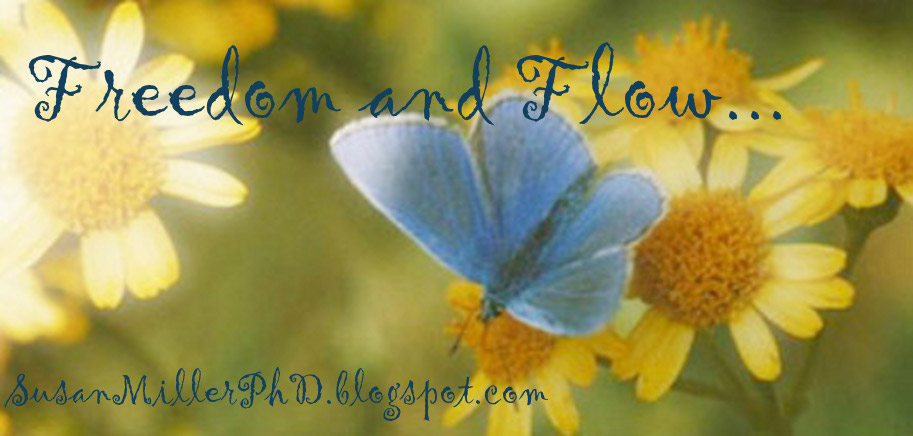
Transformation in 2012: Renewing Your Mind
by Susan Miller, PhD, LPCS, NCC
Board Certified Professional Christian Counselor
Kaizen-Muse™ Creativity Coach and Professional Life Coach
“Do not conform any longer to the pattern of this world, but be transformed by the renewing of your mind.” Romans 12: 2 NIV
“Finally, brothers, whatever is true, whatever is noble, whatever is right, whatever is pure, whatever is lovely, whatever is admirable – if anything is excellent and praiseworthy – think about such things.” Philippians 4: 8 NIV
The word resolution means a firm decision or intention to do something or not to do something. Resolutions alone do not work for me. They are certainly easy to make, but horrendous to follow through without some clutter removal in my mind.
What do we want when we make a New Year resolution? We desire transformation – a permanent positive change. Transformation cannot occur unless we begin with two very important questions:
What thoughts am I feeding my mind? What am I believing about myself to be true?
Transformation starts when we take a hard look at the lies that we believe about ourselves. These lies or false beliefs color how we perceive and experience our lives. Most of us have some unhealthy thinking patterns that originated in our early years when we were not yet able to think abstractly. We experienced life literally as a child. In the course of this literal translation of life, we took on some false beliefs about who we are. These negative core beliefs stick with us like glue and continue to wreak havoc with our attempts to make positive renovations in our lives unless we begin the process of renewing our mind.
Renewal means renovation, restoration, rejuvenation, revitalization, rekindling and regeneration. Renewing the mind is a more fluid process that has to come before making an actual resolution. This process requires us to dig deeper into the roots of our thinking patterns, then change these to patterns that encourage rather than prohibit desired change in our lives. Renewing our mind offers fertile tilled ground in which we can begin to grow the fruit we wish to produce.
The world around us, like Paul talks about in Romans 12: 2, can have a negative influence on our thinking and living, conforming us to define ourselves through our performance or other people’s approval. This poor self-concept can cause unruly behavior patterns such as self-sabotage, procrastination, avoidance and self-criticism. These behavior patterns are what get us into trouble with following through with any resolutions or intentions we have in our lives. Paul recommends in both Romans 12: 2 and Philippians 4: 8 something that is wonderfully revolutionary that really works: Renewing our minds! Renewing our minds means filling our thoughts with what is true, noble, right, pure, lovely, admirable, excellent and praiseworthy. We can change our brain by replacing the negative thoughts with positive ones setting up a new foundation that can motivate us into complete transformation.
Do you want transformation this year? I know I do. Here are several ways to begin the renovation process in your brain to help you move toward desired change:
1. Explore your faith through reading the Bible and studying uplifting inspirational writings.
2. Practice spiritual disciplines such as prayer, meditation, confession, worship, celebration, reflection and mindfulness.
3. Begin each day with an simple affirmation about yourself and life that you can remember each time your inner critic shouts too loud.
4. Be more compassionate with yourself by changing your self-talk to something more kind. Instead of saying “I can’t ever get this right” say “If I keep trying, I will begin to get this right more often!”
5. Give yourself permission to lower your expectations if you are finding it hard to succeed at your intentions. Break down your goals into smaller steps and focus on one thing at a time.
6. Write a credit report at the end of the day. Write a list of at least five things you accomplished that day. Remember that you make a difference and an impact in the world each day!
If you would like to learn more about transformation by the renewing your mind, here are a few good books to read:
Spiritual Transformation:
Search for Significance by Robert McGee
Celebration of Discipline: The Path to Spiritual Growth by Richard Foster
Living a Purpose-Full Life by Jan Johnson
The Purpose-Driven Life by Rick Warren
Setting Goals and Creativity Transformation:
One Small Step Can Change Your Life: The Kaizen Way by Robert Maurer, PhD
The Nine Modern Day Muses: 10 Guides to Creative Inspiration by Jill Badonsky, MEd
I would be happy to help you on your journey of transformation with counseling, life purpose coaching, and creativity coaching to make your 2012 be all that you want it to be! Check out my website www.millercounselingservices.com for more information about Miller Counseling Services.
Happy New Year!
Susan






